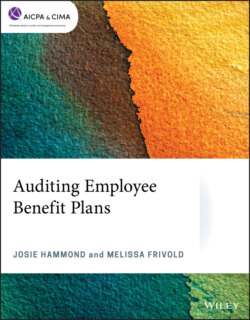Читать книгу Auditing Employee Benefit Plans - Josie Hammond - Страница 8
Introduction
ОглавлениеThe purpose of this course is to assist you in auditing employee benefit plans. Most employee benefit plan audits are required for compliance with the Employee Retirement Income Security Act of 1974 (ERISA). A critical step in any audit process is to gain an understanding of the entity subject to audit. This chapter outlines the basic types of plans, the roles of the parties involved in running those plans and the tax rules, which define the limits of their operation. Chapter 2 will address applicable accounting and reporting standards, as well as recent developments in the employee benefit plan industry. Chapter 3 will discuss reporting and audit requirements.
ERISA is the starting point for plan definition. ERISA contains four titles. Title I includes the general Department of Labor (DOL) responsibilities for plans. It includes reporting and disclosure (where the audit rules are located), funding, benefit accrual and vesting, fiduciary conduct, and enforcement. Title II is the tax law requirements for benefit plans. This includes nondiscrimination, funding, vesting, coverage, and so on. Title III deals with specific jurisdiction and enforcement procedures, which are beyond the scope of this course. Title IV deals with the plan termination insurance program for defined benefit pension plans (including single employer, multiple employer, and multiemployer).
Most of this chapter will be spent dealing with the operational framework of benefit plans. This is particularly necessary, as there has been a significant change in the kinds of employee benefit plans offered since ERISA passed. Through the mid-1980s to early 1990s, fully insured noncontributory medical and life plans, and defined benefit plans were typical employer-sponsored plans. However, economic instabilities, the spiraling cost of medical care, the shift to two-income families with the resulting desire of employees to pick their personal benefit package from what is offered by both employers and, finally, the tendency of employees to change jobs frequently have all contributed to significant changes in benefit plans. Today, an employer is more likely to provide a contributory self-funded medical plan via a cafeteria plan, voluntary supplemental life or disability coverage, and a defined contribution profit-sharing plan with an employee contributory 401(k)/403(b) feature. Only the fully insured group life plan has remained relatively intact over this time.
